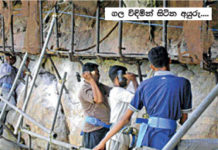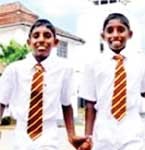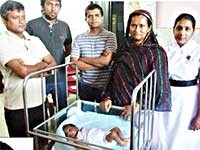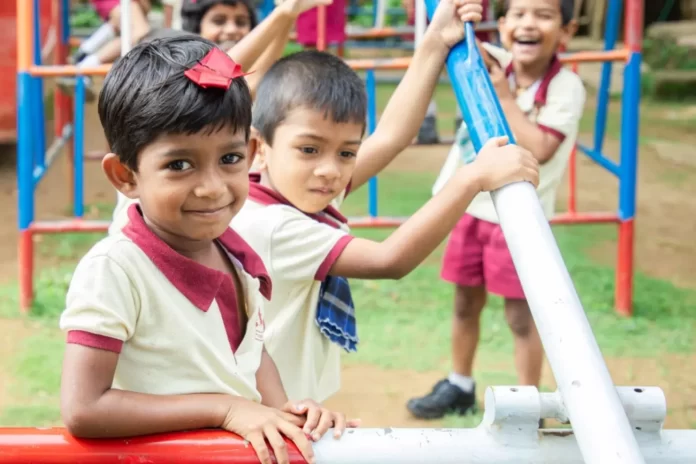BY Dr. Viduni Basnayake
Early childhood is a critical stage in a person’s life. Between birth and the age of five, a child’s brain grows and develops more than at any other time, shaping the way that they learn, think, behave, and interact with the world. In Sri Lanka, preschool education is supposed to serve as the first bridge between life at home and formal education. But, despite how important this phase is, there are serious gaps in how the system works, especially for families that cannot afford private education or live in underdeveloped areas.
As of 2021, Sri Lanka had around 19,216 registered preschools and early childhood development centres. Out of these, nearly 80% were run by private individuals or institutions. Only about 2,000 were operated by the government. The rest were managed by religious organisations and non-Governmental organisations (NGOs). This heavy tilt toward private providers has created wide gaps in access and quality. In short, where a child is born and how much money their family has can determine whether or not they receive a strong start in life.
The situation becomes even clearer when one looks at how preschools are spread across the country. The Western Province (WP), which includes the capital (Sri Jayewardenepura Kotte, and Colombo, the latter the commercial capital) and economic centres, had the highest number of preschools at 4,181. The Northern and Uva Provinces, on the other hand, had far fewer: 1,583, and 1,473, respectively. In the Northern Province however, nearly 30% of its preschools were government-run, compared to just 5.5% in the WP. In areas like Kilinochchi and Mullaitivu, government-run centres dominate because private investors have been reluctant to move in after decades of conflict.
Even when religious and NGO-run preschools exist, they charge fees to cover basic running costs. So, in practice, access to preschool education still depends heavily on a family’s financial situation. What is worse is that even though the names ‘Montessori’, ‘kindergarten’, ‘nursery’, and ‘child development centre’ are used, there is no standard structure or curriculum. This means that children in one preschool may be learning and developing in very different ways compared to kids in another, even within the same district.
According to the 2016 National Census on Early Childhood Development, only about 56% of children aged three to five were attending some kind of preschool. In urban areas, the rate was close to 68%. But, in rural areas, it dropped to 47%, and in the estate sector, it was even lower at 44%. These figures also do not account for children with disabilities or from extremely poor or marginalised families, many of whom are left out of the system altogether because of fees, the lack of infrastructure, or learning environments that are not inclusive.
Although the Government has announced several steps to fix these issues, including infrastructure development in underserved areas and subsidies for non-profit preschools, progress has been slow. Experts say that the only way to create lasting change is to view preschool education as a long-term public investment. This means funding it through national budgets and connecting it to wider social protection programmes.
Quality is another area where Sri Lanka’s preschool sector is struggling. Although early childhood development standards have been developed, most preschool teachers and caregivers either do not know about them or are not trained to use them. There is also no national curriculum that sets a basic level of what children should learn. As a result, learning environments vary widely. In some centres, children get exposed to storytelling, creativity, and emotional learning. In others, they sit in rows and memorise letters and numbers with little understanding or interaction.
Many preschools do not have basic child development tools or regular systems to measure how a child is growing intellectually, emotionally, and physically. Some do not even have safe and clean spaces for kids to play. Without regular monitoring and accountability, there is no way to ensure that a child is learning in a healthy and developmentally appropriate setting. Introducing a national curriculum and a proper inspection and accreditation system are key if the country wants to raise standards.
Teachers are at the centre of any effort to improve early childhood education. But, in Sri Lanka, most preschool teachers are underpaid, poorly trained, and have little recognition as professionals. Although more than 70% of them have taken a basic one-year course, many others have not received any kind of formal training. There is no clear system for teacher qualifications or promotions. That means that even the most dedicated teachers have little incentive to improve their skills or stay in the profession long-term.
If Sri Lanka wants to build a strong preschool system, it needs to support its teachers. Training centres should offer recognised, affordable programmes. Scholarships and incentives should be introduced to encourage continuous learning. And importantly, preschool teachers must be treated and paid as professionals, not as volunteers or caretakers.
Another part of the problem lies at home. Many Sri Lankan parents see preschool as nothing more than a stepping stone to Grade One, rather than a crucial phase in their child’s development. This mindset can weaken the link between the home and the school. When parents are not actively involved, children miss out on the learning that takes place through daily routines, play, and conversation at home. Changing this perception requires well-designed awareness campaigns, workshops, and community-based programmes. Preschool development committees could help bring parents, teachers, and local leaders together, but, they need proper support and funding to work effectively.
Sri Lanka has taken a few important steps in the right direction, including formulating a national policy on early childhood education. But, policies alone will not change anything unless they are followed up with action. The problems are too deeply rooted for piecemeal reforms. Access, quality, staffing, and governance are all tied together. Fixing one without addressing the others will not make much of a difference.
It is time that we stop thinking of preschool education as optional or secondary. It is not just about preparing kids to read and write. It is about setting them up for life – socially, emotionally, and intellectually. Every Rupee spent on early childhood education is an investment in the future workforce, in reduced poverty, and in a healthier, more educated society.
Preschool education is not a luxury. It is a necessity, and it is a right. Sri Lanka must treat it as such by backing up policy promises with adequate funding, smart planning, and strong accountability. Only then can we hope to give every child, no matter where they are born or how much money their parents have, the start in life that they deserve.
The writer is a Temporary Demonstrator at the Department of Psychiatry of Jaffna University’s Medical Faculty
The views and opinions expressed in this article are those of the author and do not necessarily reflect those of this publication
Source: TheMorning
© All images and text content are credited to their respective owners.





















